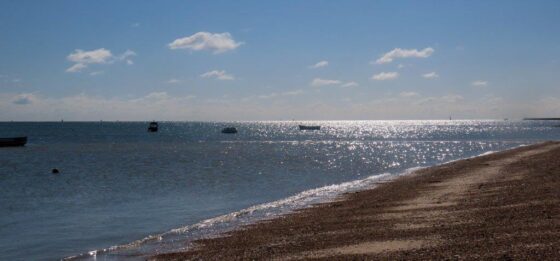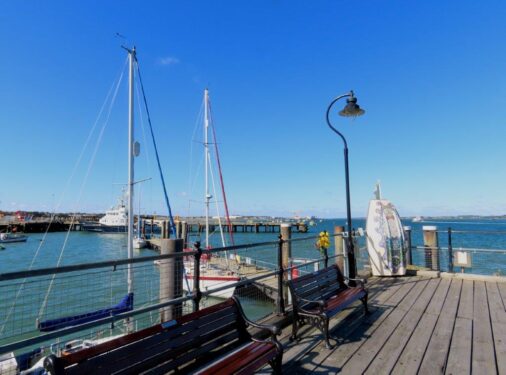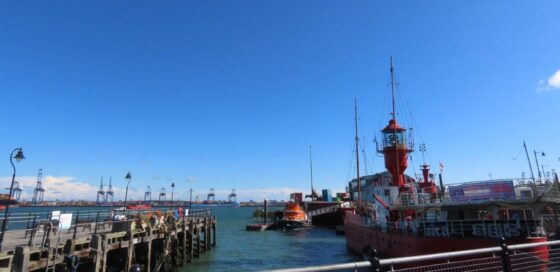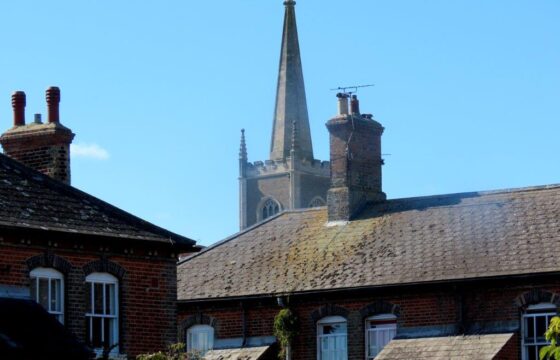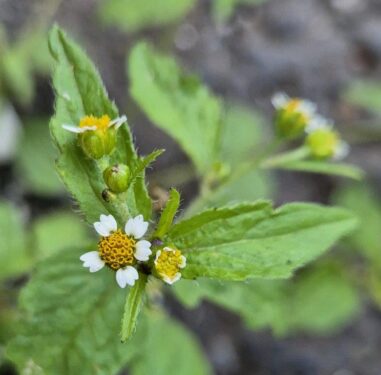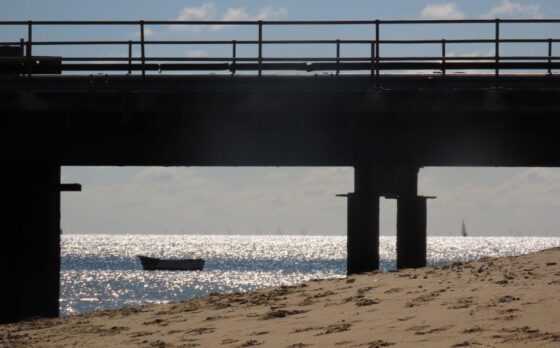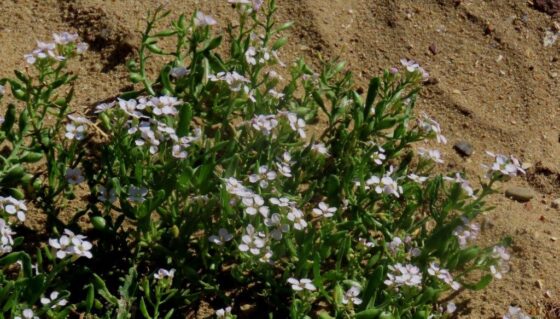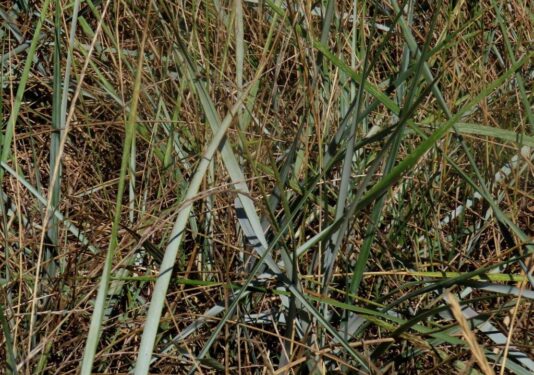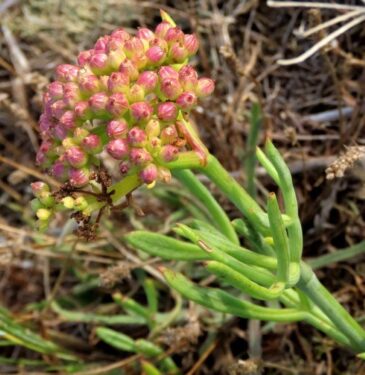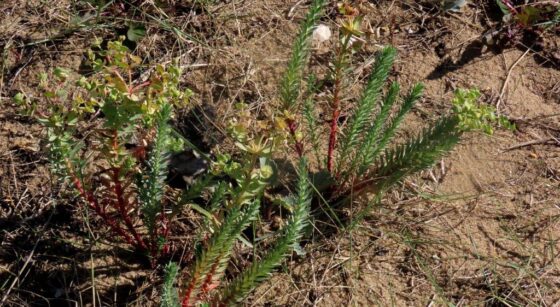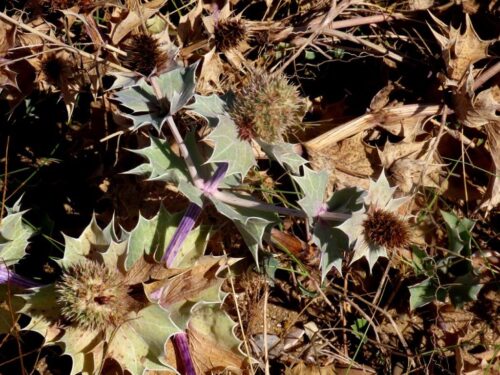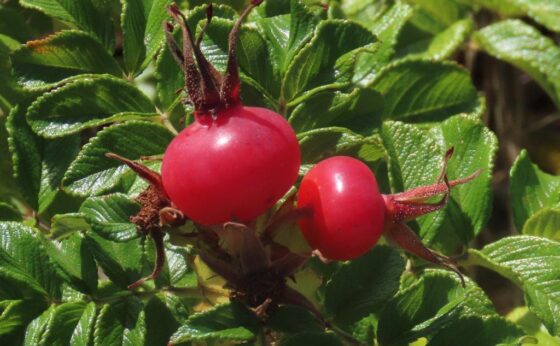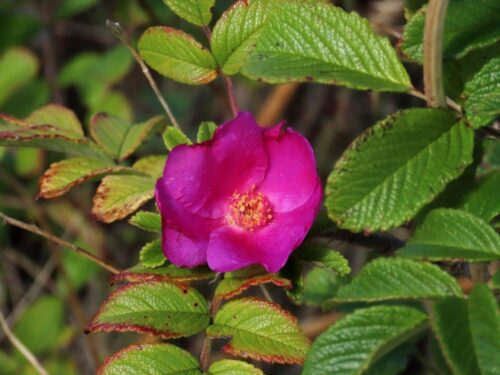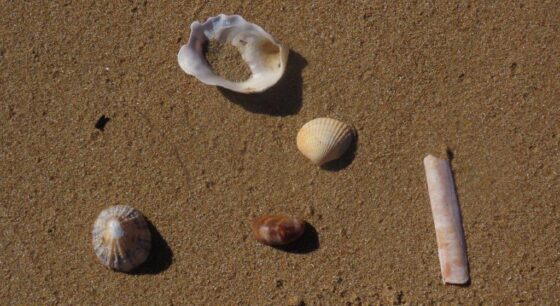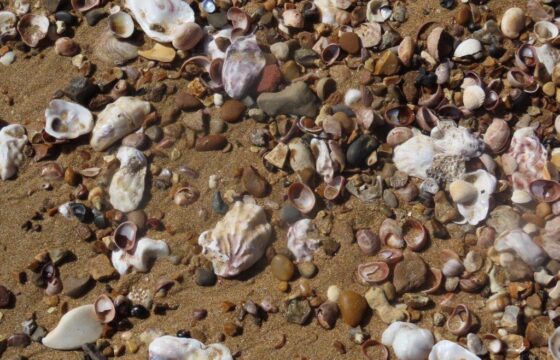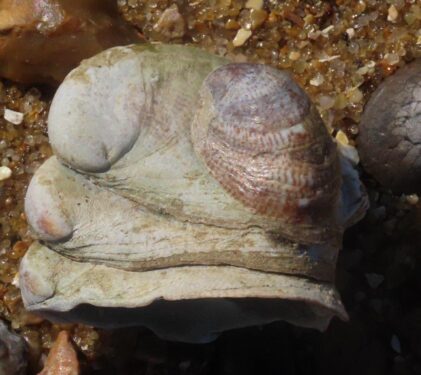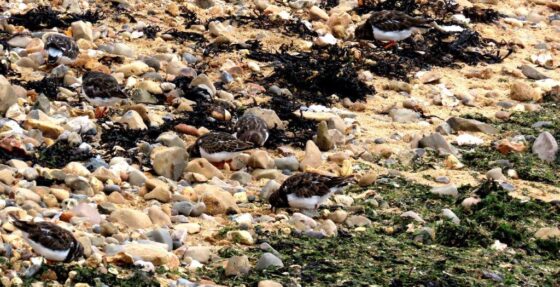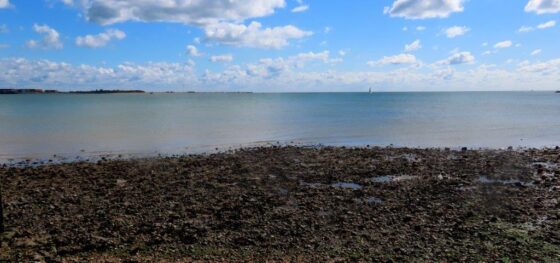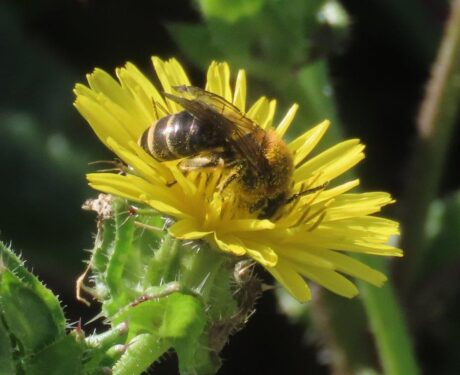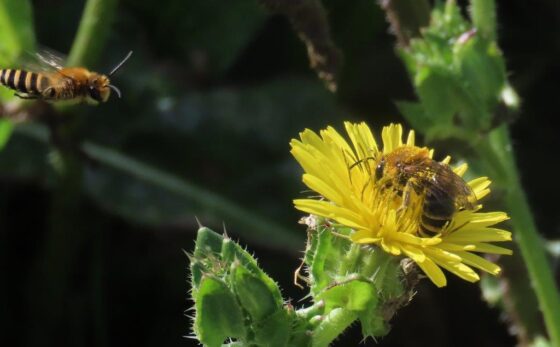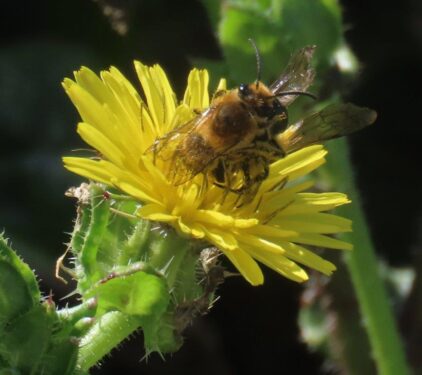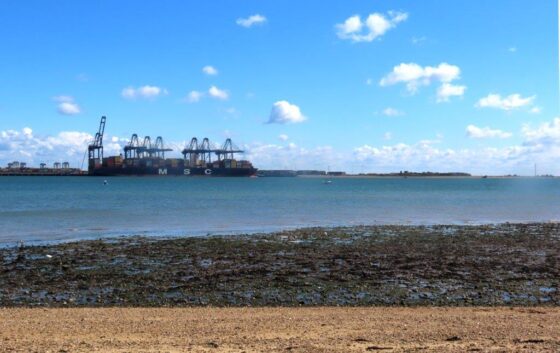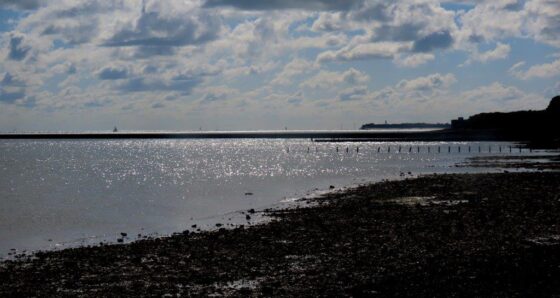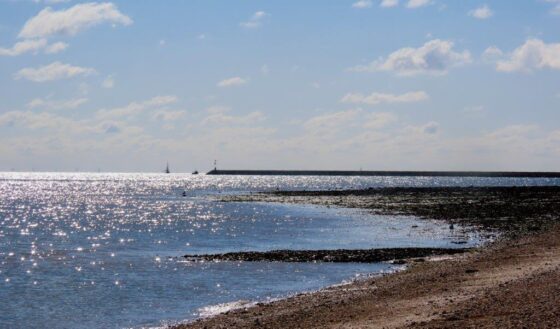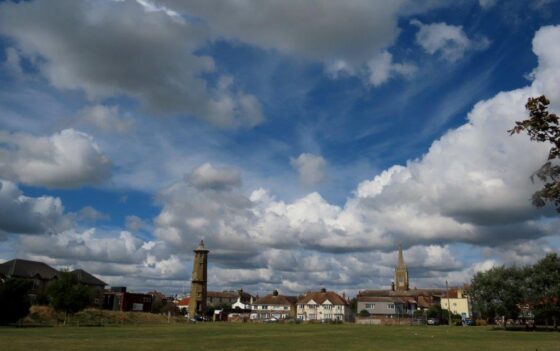Despite disappointment that our proposed ferry trip to Felixstowe wasn’t possible due to windy weather, we nevertheless thoroughly enjoyed half of our planned day’s event – a morning’s walk around Harwich – the Wild Essex event for September. The ‘après walk’ of lunch in the Pier Café and a drink in the Alma only added to the fun and we’d like to thank everyone who came along.
Harwich with its many historic buildings was once a busy and thriving port, but today had a relaxed air of an out-of-season holiday destination, with few other visitors. And the cracks of the pavements were filled with interesting plants such as Shaggy Soldier.
We had the beach to ourselves, which gave a free rein to admire and study the plants which thrive in this most inhospitable of habitats: Sea Rocket on the strandline, Lyme Grass, Rock Samphire, Sea Spurge and Sea-holly on the low dunes, although the latter especially was looking very frazzled after the midsummer heat and drought.
Greenest of all was the clump of Japanese Rose, also with its large lustrous hips and a few extravagantly scented flowers. An aggressive spreader in some circumstances, it was good to see it has remained pretty stable since we left the area a decade ago.
We did a quick roll-call of shells on the beach – cockles, mussels, oysters, limpets, slipper-limpets and whelks to name but a few, but although we hunted high and low we weren’t fortunate enough to find any of the fossilized sharks’ teeth which we know reside on the beach. It’s one of those things – sometimes you’re lucky and sometimes not!
Of course we managed a spot of birdwatching whilst there, with Sandwich Terns passing by noisily and fishing just offshore, a medley of different gulls providing aerial entertainment and Turnstones feeding unobtrusively on the rocky, weed-covered shoreline of the Harwich Stone Band, the only natural rocky shore between North Norfolk and Kent.
The few insects around (there had been quite a temperature drop overnight) included plasterer bees feeding and fighting (or frolicking?) on flowers of Bristly Oxtongue: the bees were probably Sea Aster Mining-bees, though related species are very difficult to tell apart.
On the other side of the estuary the comings and goings of the busy port of Felixstowe were interesting to view, as were the various arrays of wind turbines, very visible in the clear morning sky.
We hope to rearrange this trip next year – aiming for early summer rather than late, in the hope that the weather will be calmer and the ferry will be running.
